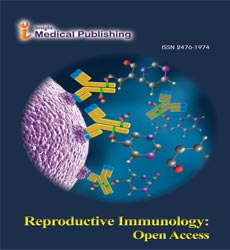Abstract
It is Time to Replace Postpartum Tubal Ligation with Bilateral Salpingectomy
Postpartum sterilization is a popular and effective method of contraception in the United States. As of 2012, postpartum sterilization was performed after 10% of all hospital deliveries, which equated to approximately 400,000 procedures annually [1,2]. Sterilization can be conveniently performed at the time of cesarean delivery or in the immediate postpartum period after a vaginal delivery [1]. Advantages include the technical ease, the one-time use of anesthesia in the case of a patient receiving an epidural during labor, the utilization of a current hospitalization, and the increased compliance, especially in low-income patients [3].
Author(s):
Rachel Blair Danis MD* and Scott D. Richard MD
Abstract | Full-Text | PDF
Share this

Google scholar citation report
Citations : 237
Reproductive Immunology: Open Access received 237 citations as per google scholar report
Abstracted/Indexed in
- Google Scholar
- Sherpa Romeo
- China National Knowledge Infrastructure (CNKI)
- Secret Search Engine Labs
Open Access Journals
- Aquaculture & Veterinary Science
- Chemistry & Chemical Sciences
- Clinical Sciences
- Engineering
- General Science
- Genetics & Molecular Biology
- Health Care & Nursing
- Immunology & Microbiology
- Materials Science
- Mathematics & Physics
- Medical Sciences
- Neurology & Psychiatry
- Oncology & Cancer Science
- Pharmaceutical Sciences

